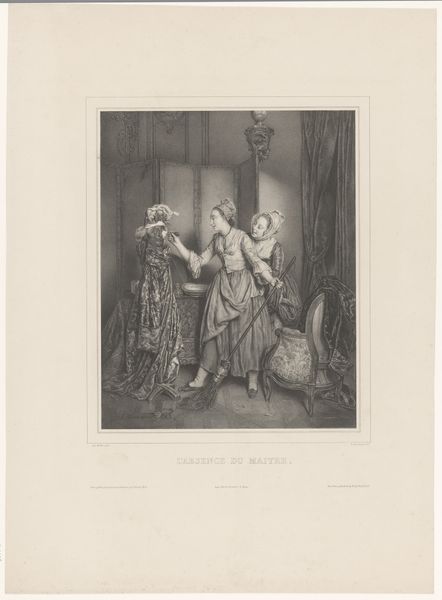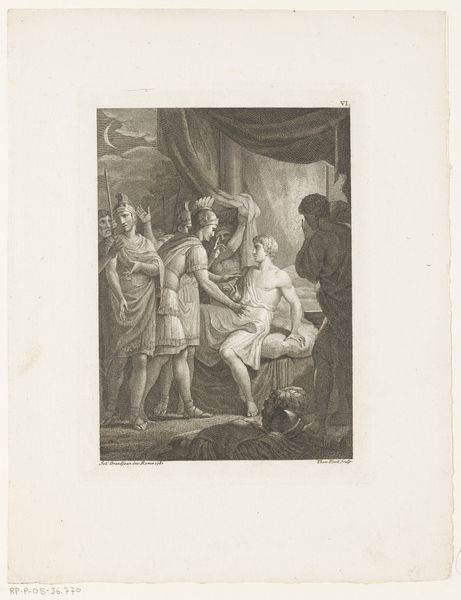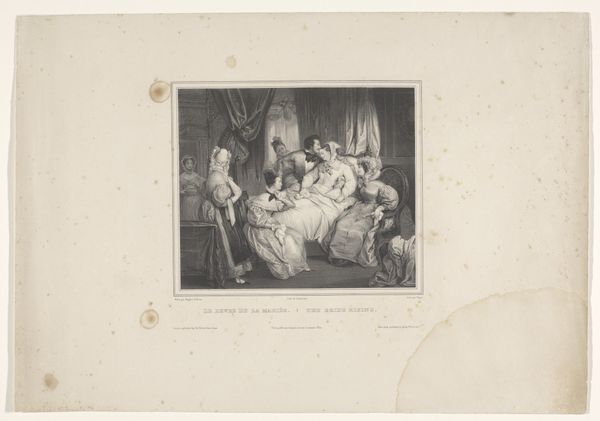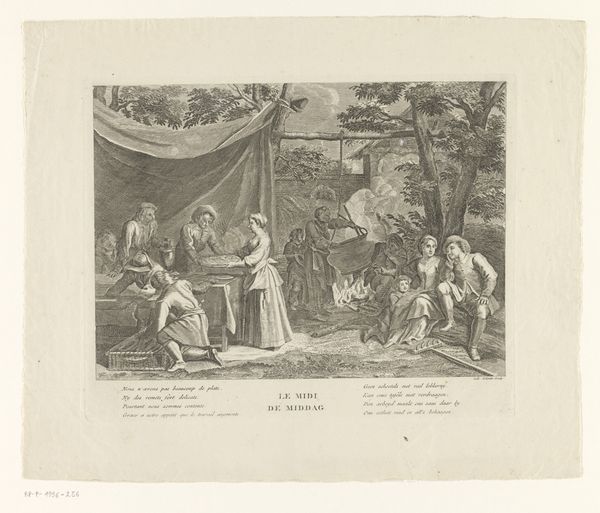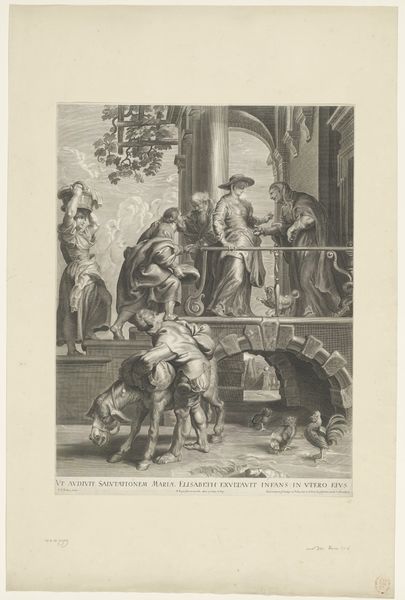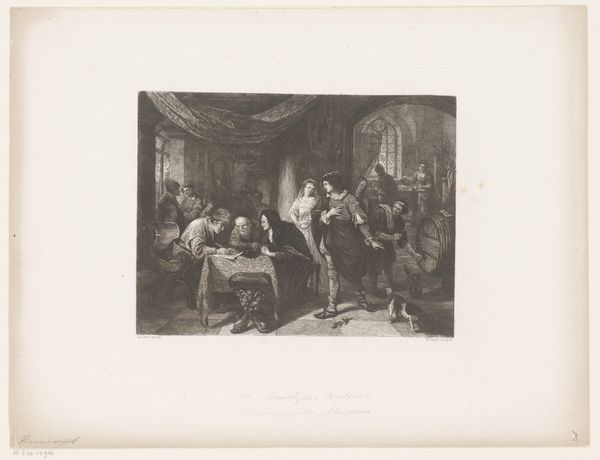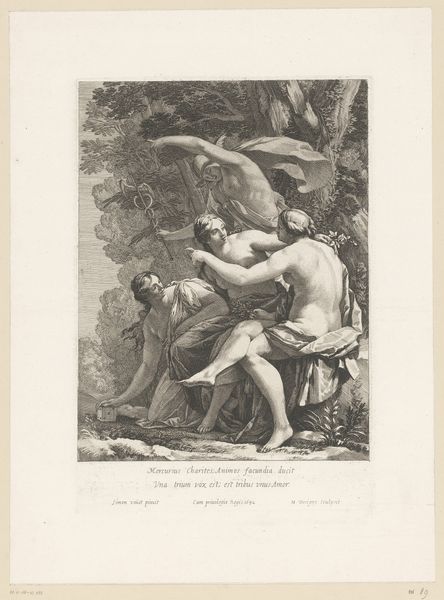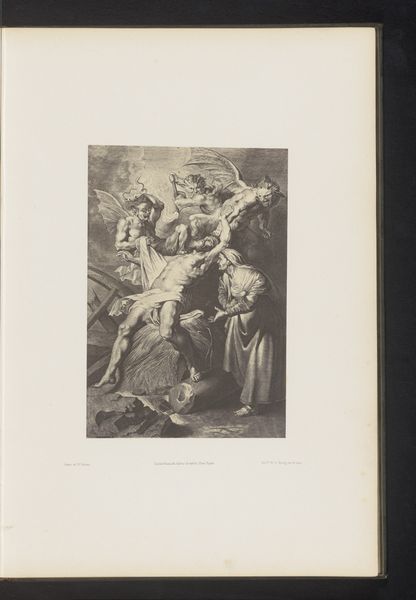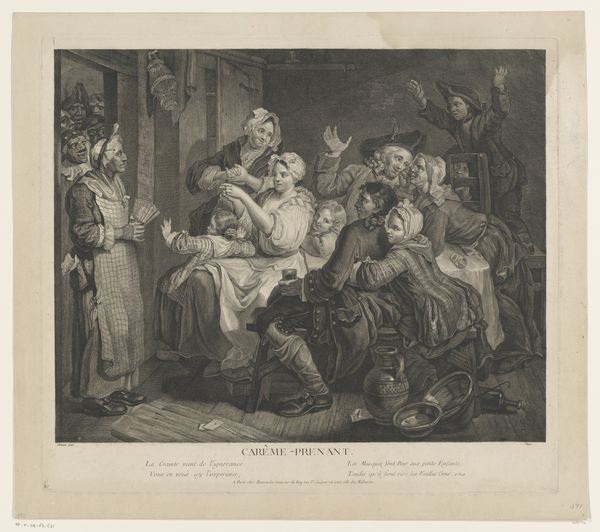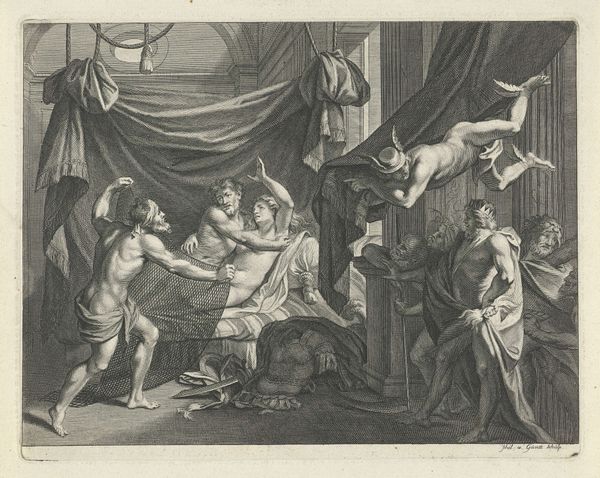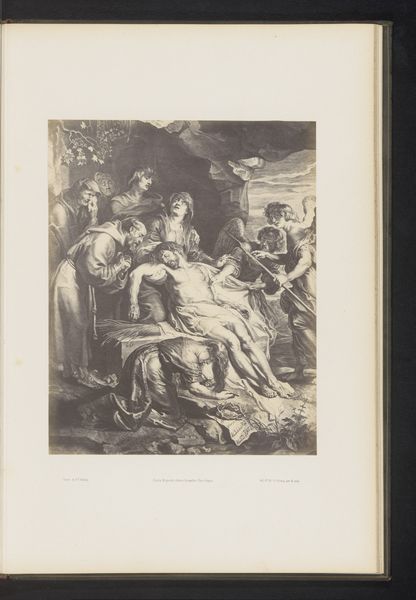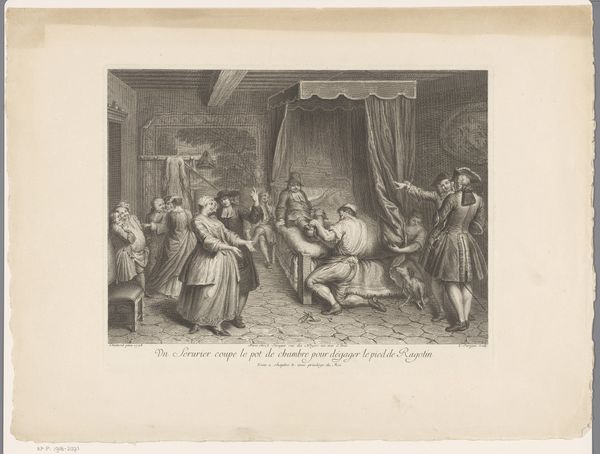
print, engraving
#
narrative-art
#
baroque
# print
#
old engraving style
#
figuration
#
history-painting
#
engraving
Dimensions: height 356 mm, width 264 mm
Copyright: Rijks Museum: Open Domain
Editor: Here we have "Death of Dido," a 1643 engraving by Michel Dorigny. It’s a somber scene; Dido is surrounded by figures who seem to be mourning her. The stark black and white adds to the dramatic intensity. What can you tell me about this piece? Curator: This engraving powerfully depicts the tragic end of Dido, Queen of Carthage, a narrative drawn from Virgil's Aeneid. Think about the historical context. The 17th century witnessed the rise of powerful, often tragic, female figures in art and literature. Why do you think the image of a powerful woman brought low, in this case by abandonment and heartbreak, held such appeal at the time? Editor: Maybe it was about exploring themes of power and vulnerability? Or reflecting anxieties around female leadership? Curator: Exactly! Dido's story resonates with contemporary discussions about gender roles and power dynamics. This image participates in the male gaze on female suffering, where womanhood is constructed as intrinsically linked to emotional fragility and ultimately tragic demise. Consider also, how the male hero, Aeneas, is absent, yet his actions cast a long shadow, shaping her fate and perpetuating a specific representation of betrayed womanhood. Does the scene, the way Dido is portrayed, raise any questions for you regarding how women's stories were framed – and continue to be – in art and culture? Editor: It definitely makes me think about how female narratives are often filtered through a patriarchal lens, focusing on suffering and victimhood rather than agency and resilience. It seems like her story is not really *hers.* Curator: Precisely. Reflecting on "Death of Dido," it prompts us to reconsider how we engage with historical depictions of women and to seek out alternative narratives that center female voices and experiences. Editor: This engraving, then, it’s not just an illustration of a classical text but also a commentary on the social and political contexts surrounding its creation and reception. Thanks, I hadn't considered that angle. Curator: Art invites conversations that bridge the historical with the contemporary, revealing the ongoing power dynamics woven into our cultural fabric.
Comments
No comments
Be the first to comment and join the conversation on the ultimate creative platform.

